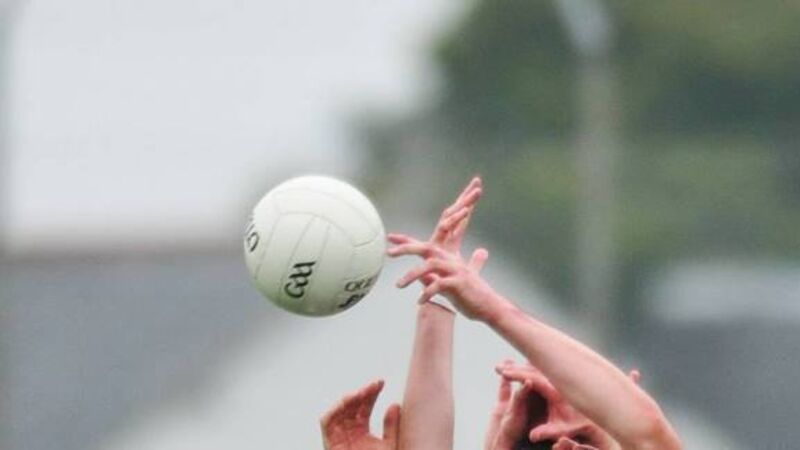The prophets of doom are mistaken about the mark

This year, Easter has added importance in Ireland, as we commemorate the 100th anniversary of the 1916 rising.
But in the GAA world, Easter is also a time for regeneration — as it marks the start of juvenile training and games after their long annual winter slumber.
The good weather has come just in the nick of time to throw some shape on muddy pitches to allow them cope with the burst of Saturday morning madness and boundless energy of almost 100 young boys and girls raring for action.
I brought my two boys down last weekend for the first session of their second year. They are rookies no longer. My wife was good enough to give them the benefit a great GAA birth date — born at the start of February, so they’ve no excuses.
We eventually found their boots, jerseys and gum shields after the months of hibernation… The gloves proved more elusive, so we decided after lengthy discussions to brave the greasy ball with bare hands.
They spent an hour on the field with the pedal to the metal which left their tongues hanging from the sides of their mouths from exhaustion. Sixty minutes filled with running, jumping, catching, kicking ball and having the best of craic.
There was no tactical talk of sweeper systems last Saturday morning, no bitching about foul play, or zone defences… just a lot of; ‘when do we get the Capri Suns and Animal bars dad?’.
I’d venture this is a scene repeated in clubs throughout the country at weekends. The cars come in the gate, and slow down just enough to let the kids jump out. By the time their feet touch the ground, the same vehicle is already heading for the exit in a haze of dust and burning rubber. Some are even good enough to roll down the window and shout out “they’re all yours now” before disappearing for an invaluable break.
As I watched my two, innocently enjoying the infancy of their experience in football, I pondered how different the game may look for them in another 15 years if they are still playing. The landscape has changed so dramatically over the past decade, and certainly not all for the worse, but what will it look like in another 10 years is anybody’s guess.
To that end, I was surprised by the general condemnation surrounding the passing of the mark into the GAA rule book following Congress.
I don’t get all the negativity. I can’t see how it can be viewed as anything other than a progressive attempt to preserve and promote one of the iconic pillars of skill in our game.
In my last year or two playing with Kerry, we were being trained to actively seek a constructive ‘tap-down’ to a half back or half-forward rather than go for the high catch from kick-outs. We were essentially being coached like ruck men in the AFL.
The clean catch had become an unwanted antique with no real modern day benefit — like when you pass one of those public phone boxes in some small village today and you suddenly remember that people had to use them before the mobile phone era.
I can recall when the square ball rule was changed a few years ago to allow the attacking player enter the small parallelogram as soon as the ball was kicked from play. The prophets of doom predicted that it would turn the box into Times Square at rush hour. That it would bring complete chaos on the goalkeeper and match officials. As it turned out, it never happened. And I believe the same prophets are fundamentally mistaken about the introduction of the mark also.
People have been cribbing that the art of high fielding has been prioritised ahead of other skills like tackling, or blocking, and they are correct.
But not all skills are created equal, and beauty is in the eye of the beholder. Some people enjoy a bunch of flowers… while others break out with hay fever at the sight of them.
There is an undeniable aesthetic quality to high fielding that is not present in tackling or blocking — Conor Gormley’s 2003 diving block against Armagh being the exception rather than the rule.
Everybody appreciates beauty in the game in different ways. Some appreciate the organisation and technique in tackling, more than they do in kick passing. But I would argue that Gaelic football was historically and fundamentally developed on the bedrock of catching and kicking.
Any effort to promote those core skills should be encouraged in my view.
I should also say that I don’t see the rule change having a major impact on the game, and I’m not sure if it will be successful in its lofty aims to re-energise the art of high-fielding. It’s not going to affect Dublin or Kerry maintaining their predominantly short kick-out strategy to half backs in any way, but I’d like to think the rule change should at least incentivise the guys under the kick-out to go up to win it cleanly a little more often, as opposed to directing tap downs all the time. Even that would be worth it.
Catching primary ball puts a target on your back in modern Gaelic football for the opposition to gang tackle you on landing and force you into over-carrying and ultimately a turnover.
Therein lies the crux of it for me. If we don’t reward the catch, there is no way of stopping it being punished either and, eventually, if it continues to be penalised, it will go the way of the phone box and disappear from our consciousness altogether.









